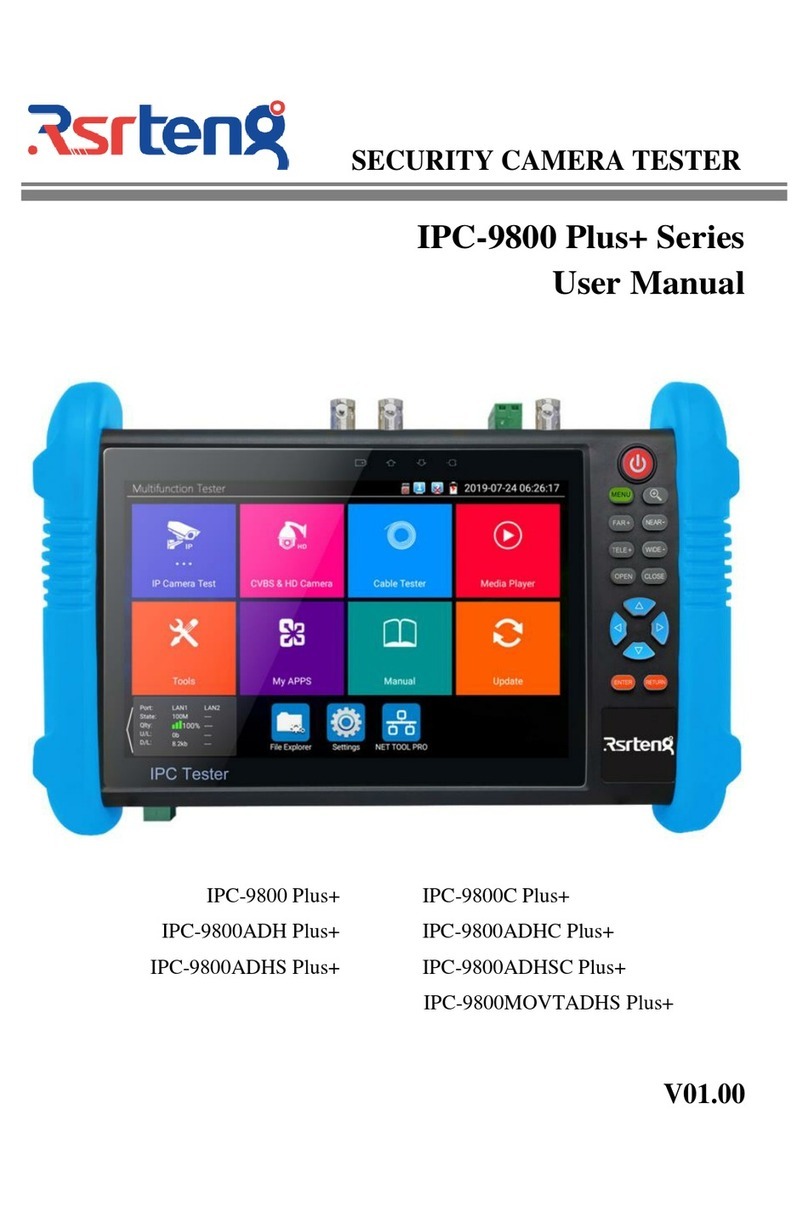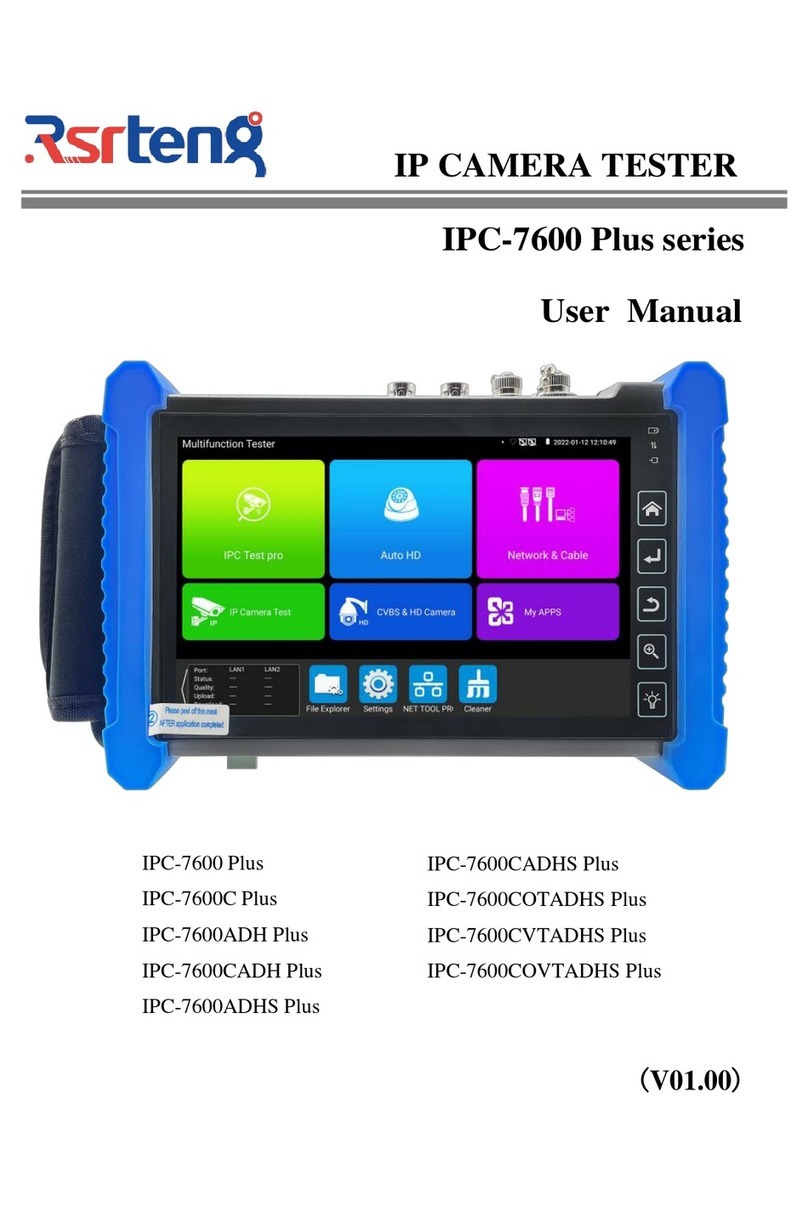
Multi-function Tester Quick Guide
4
2) Parameter setting
Laser wavelength: Selected by user, it provides several options, wavelength of single mode fiber:
1310nm, 1550nm and 1610nm; users can simultaneously select 2 wavelengths at most to
measure, and set analysis and file saving with different wavelength. In addition, multi
wavelength measurement is valid only under the average measurement mode. Multi wavelength
measurement is forbidden under the real-time measurement mode. (If the fiber over 100KM,
Please select 1550nm wavelength for testing)
Distance scope: Selected by user, options include “auto,500m,1Km,2Km,5Km,10Km,25Km,50Km,
100Km and 200Km”. If the length is uncertain, it is recommended to use automatic range, for
known length, it is recommended to use a range containing 1.5 times the minimum length.
Measurement duration: 5s, 10s, 15s, 30s, 60s, 120s, 180s is optional, if the current
measurement model is real-time measurement, the selected duration of measurement won’t
play role in the measurement. When need the meticulous and smooth curve, can select the
longer measurement time.
Pulse width: Selected by user, options include “auto, 5ns, 10ns, 20ns, 30ns, 50ns, 80ns, 160ns,
300ns, 500ns, 800ns, 1000ns, 2000ns, 4000ns, 6000ns,10000ns, 20000ns”.
Measurement mode: Selected by user, options include “average measurement and real-time
measurement”. When selected real-time measurement mode, the selected duration of
measurement won’t play role in the measurement.
Refractivity: Set by user, the default value is 1.4685. The refractivity is key parameter for
calculating the length, please don’t modify it at will.
Unit: Set by user, options include “m and ft”
Reflection threshold: No option or user setting is provided in OTDR instrument.
Non-reflection threshold: Set by user, input scope: 0.01~2.99, the default value is: auto. When
the manual setting value is 0.00, it will transfer to auto value.
End threshold: It is used as the threshold value for looking over event point when the instrument
treating data, i.e.: event points that lower than the set value of end threshold will be removed,
while the event points that higher than the set value of bundling threshold will be displayed. For
options set by user, input scope is: 1~19.99dB, the default value is: 5.00dB.
Optical warning of optical fiber: Options include “ON and OFF”, When in ON, if the optical fiber
has optical signal, the instrument will pop up alarm.
Default setting recovery: Distance scope is “auto”, pulse width is “auto”, duration of
measurement is “5 s”, laser wavelength is “1550nm”, measurement mode is “average mode”,
length unit is “meter”, refractivity is “1.4685”, back scattering coefficient is “auto”, reflection





























